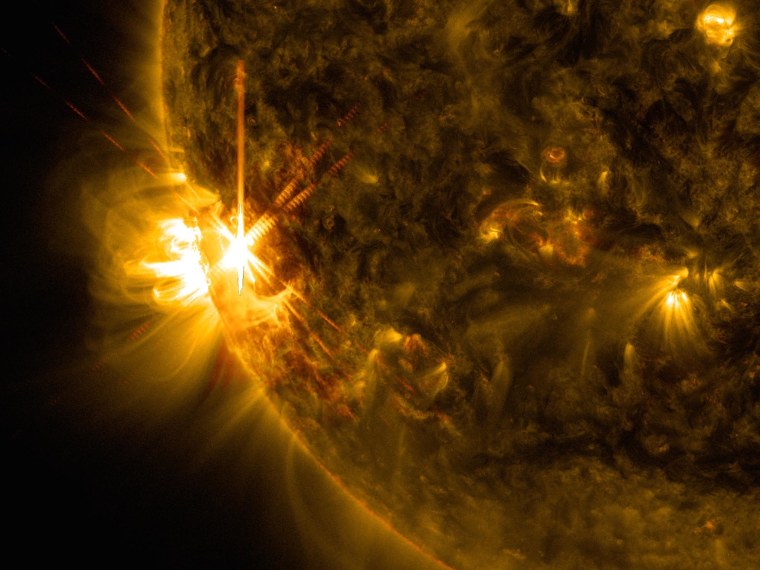The sun is hitting its stride: It shot off yet another powerful solar flare on Wednesday after producing a pair of major solar storms Tuesday.
The X1-class flare reached its peak at 5:06 a.m. ET and came from Region 2087 near the southeastern limb of the sun's disk, the same region of the star that produced Tuesday's two powerful solar flares. NASA captured an amazing video of the X1 solar flare using its space-based Solar Dynamics Observatory.
Sign up for Science news delivered direct to your inbox
Today's solar tempest did cause a brief radio blackout on Earth, but officials with the U.S. Space Weather Prediction Center based in Boulder, Colorado, don't think that the flare has an associated coronal mass ejection — a burst of hot plasma sent out from the sun during some solar flares. [See photos of the biggest solar flares in 2014]
While officials with the SWPC didn't initially think that Tuesday's flares produced a coronal mass ejection — a burst of plasma associated with some solar flares — later analysis shows that the flares did produced two CMEs. The first solar flare produced a relatively small CME, and the second merged with it shortly afterward, according to astronomer Tony Phillips at SpaceWeather.com.

The CME is expected to give Earth a glancing blow, when it reaches our part of the solar system on Friday. It's possible that the incoming CME could create polar geomagnetic storms, according to Phillips.
The sun is in the active phase of its 11-year solar cycle, called Solar Cycle 24. NASA officials now think the sun's activity is at its maximum, which they have dubbed the "mini max." Although the sun's activity is on the upswing, NASA officials say this solar max is still quite weak by comparison to other solar maximums on record. Scientists initially had expected that the solar maximum, the peak in the sun's activity cycle, would occur in 2013.
— Miriam Kramer, Space.com
This is a condensed version of a report from Space.com. Read the full report. Follow Miriam Kramer on Twitter and Google+. Follow Space.com on Twitter, Facebook and Google+.